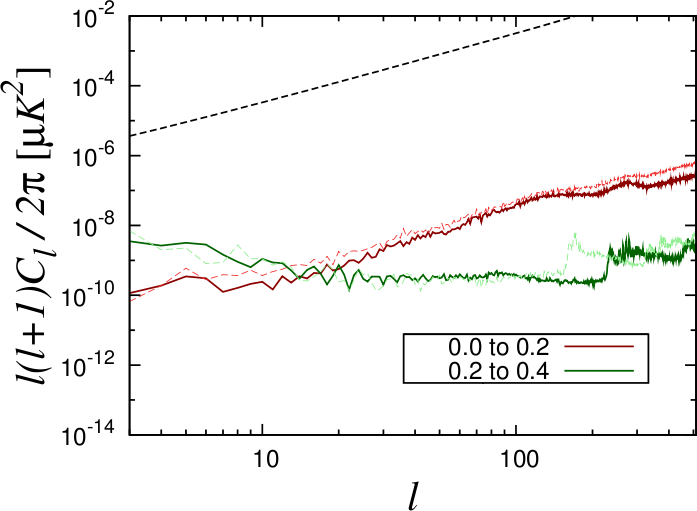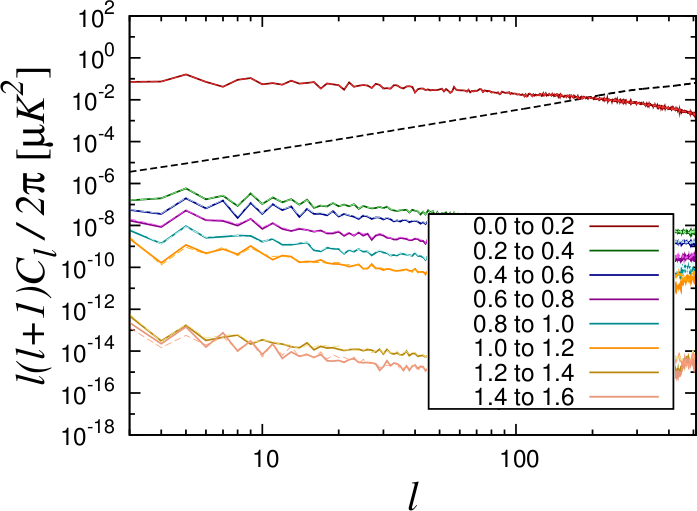Requirement analysis for LiteBIRD’s optical system
JAXA Supercomputer System Annual Report April 2018-March 2019
Report Number: R18EACA34
Subject Category: JSS2 Inter-University Research
- Responsible Representative: Ryo Nagata, Researcher, High Energy Accelerator Research Organization (KEK)
- Contact Information: Ryo Nagata(rnagata@post.kek.jp)
- Members: Ryo Nagata
Abstract
Primordial gravitational wave background is generically predicted by cosmic inflation theories. Its amplitude indicates the energy scale of cosmic inflation. LiteBIRD maps the polarization of microwave background sky to detect the signal of the gravitational waves. Since the signal of gravitational wave origin (B-mode pol.) is expected to be much weaker than that of primordial density fluctuation origin which has been already observed, it is essentially important to identify and mitigate systematic errors.
Radiation in-flow through beam far sidelobes is one of the largest contaminants which potentially gives major impacts on Galactic foreground separation. By performing full beam convolution simulations, we quantitatively discuss about systematic errors from such beam imperfection. During the research period of this year, we achieved the simulations with a new scan strategy updated for the ISAS Phase-A1 exit review.
Reference URL
Please refer to ‘LiteBIRD: Lite (Light) satellite for the studies of B-mode polarization and Inflation from cosmic background Radiation Detection.‘.
Reasons for using JSS2
Since LiteBIRD will achieve scan observations for full sky polarization mapping, the beam convolution is repeated at the frequency of about 20Hz (and for the period of one year). The beam functions, which are based on physical optics calculations (by use of GRASP), spread through almost the entire sky with arcminute resolution. For every sampling, integrands are evaluated on O(10^6) grid points. The integrations with incessant coordinate transformations require a high performance computing resource.
Achievements of the Year
We performed a simulation suite of LiteBIRD observation which consists of scan, beam convolution, and map making. With our new scan strategy, we investigated how radiation in-flow through sidelobes is affected by the scan orbit and the satellite’s attitude.
(Fig.1) shows the simulation result (solid:new scan, dashed:previous scan) of observation of microwave background polarization. In the simulation, we used a 40GHz beam function corresponding to a detector pixel located at an outer edge of the focal plane. In an area of 0.2 to 0.4 radian from the beam peak,it has a localized structure which was suspected to be a possible false B-mode source due to its spatial asymmetry. We found the contamination was still kept lower than 1% of the lensing B-mode level (black dashed) after the update of the scan strategy and the beam function exhibited good properties from the main beam’s neighbour to the sidelobes. On the other hand, (Fig.2) shows the simulation result of observation of Galactic foreground. We used a 100GHz beam function corresponding to a detector pixel located at the center of the focal plane with the model of 100GHz polarized Galactic foreground emission. We didn’t find significant deviation from the plots in the case of the previous scan; however, the power of the contamination leaked through sidelobes beyond 0.2 radian was confirmed to have still unmissable amplitude.

Fig.1: Angular power spectra of cotanimation due to 40GHz beam imperfection for new and previous scan strategies. (Angle bias due to feed pattern imperfection is corrected.)

Fig.2: Angular power spectra of cotanimation due to 100GHz Galactic foreground for new and previous scan strategies.
Publications
– Oral Presentations
Ryo Nagata, “On the systematic effects of LiteBIRD observation XII”, Astronomical Society of Japan 2019 spring annual meeting
– Web
http://litebird.jp/eng/
Usage of JSS2
Computational Information
- Process Parallelization Methods: MPI
- Thread Parallelization Methods: OpenMP
- Number of Processes: 32
- Elapsed Time per Case: 2.5 Hour(s)
Resources Used
Fraction of Usage in Total Resources*1(%): 0.16
Details
Please refer to System Configuration of JSS2 for the system configuration and major specifications of JSS2.
| System Name | Amount of Core Time(core x hours) | Fraction of Usage*2(%) |
|---|---|---|
| SORA-MA | 1,505,770.67 | 0.18 |
| SORA-PP | 34.83 | 0.00 |
| SORA-LM | 0.00 | 0.00 |
| SORA-TPP | 0.00 | 0.00 |
| File System Name | Storage Assigned(GiB) | Fraction of Usage*2(%) |
|---|---|---|
| /home | 9.54 | 0.01 |
| /data | 1,907.35 | 0.03 |
| /ltmp | 1,953.13 | 0.17 |
| Archiver Name | Storage Used(TiB) | Fraction of Usage*2(%) |
|---|---|---|
| J-SPACE | 0.00 | 0.00 |
*1: Fraction of Usage in Total Resources: Weighted average of three resource types (Computing, File System, and Archiver).
*2: Fraction of Usage:Percentage of usage relative to each resource used in one year.
JAXA Supercomputer System Annual Report April 2018-March 2019


